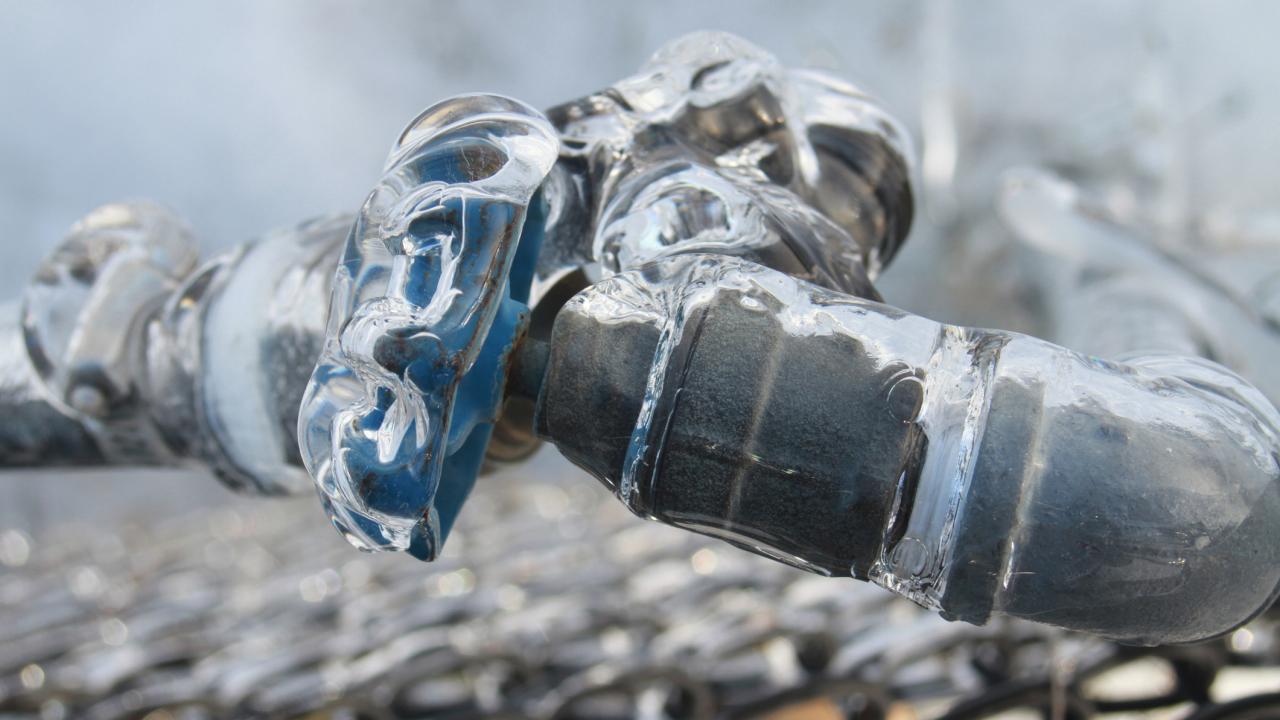The writer is making a number of good pointers related to How to Prevent Your Pipes From Freezing in general in this post followed below.

Winter can wreak havoc on your plumbing, particularly by freezing pipes. Here's how to prevent it from occurring and what to do if it does.
Introduction
As temperatures drop, the risk of frozen pipelines rises, possibly leading to costly fixings and water damages. Understanding exactly how to stop frozen pipes is critical for house owners in chilly climates.
Recognizing Icy Pipes
What creates pipes to freeze?
Pipes ice up when exposed to temperature levels listed below 32 ° F (0 ° C) for prolonged periods. As water inside the pipelines freezes, it expands, taxing the pipe walls and potentially causing them to rupture.
Risks and problems
Frozen pipes can lead to water system disruptions, property damages, and pricey repair work. Ruptured pipes can flood homes and create considerable architectural damages.
Indicators of Frozen Pipes
Identifying frozen pipelines early can stop them from breaking.
Just how to determine frozen pipes
Look for decreased water circulation from taps, unusual odors or sounds from pipelines, and visible frost on exposed pipelines.
Prevention Tips
Insulating at risk pipelines
Wrap pipelines in insulation sleeves or utilize heat tape to shield them from freezing temperatures. Concentrate on pipes in unheated or exterior locations of the home.
Heating methods
Keep interior rooms properly warmed, especially locations with pipes. Open cupboard doors to permit warm air to distribute around pipelines under sinks.
Safeguarding Outside Pipes
Yard pipes and exterior taps
Detach and drain garden hose pipes before winter months. Set up frost-proof faucets or cover outside taps with shielded caps.
What to Do If Your Pipelines Freeze
Immediate activities to take
If you suspect frozen pipelines, maintain taps open up to alleviate pressure as the ice melts. Use a hairdryer or towels soaked in warm water to thaw pipelines gradually.
Long-Term Solutions
Structural adjustments
Consider rerouting pipes far from outside walls or unheated locations. Include additional insulation to attics, cellars, and crawl spaces.
Upgrading insulation
Invest in high-grade insulation for pipelines, attics, and wall surfaces. Appropriate insulation helps keep constant temperature levels and minimizes the risk of icy pipes.
Final thought
Protecting against frozen pipes requires proactive measures and fast reactions. By recognizing the causes, indicators, and preventive measures, home owners can safeguard their pipes during cold weather.
6 Proven Ways to Prevent Frozen Pipes and Protect Your Home
Disconnect and Drain Garden Hoses
Before winter arrives, start by disconnecting your garden hoses and draining any remaining water. Close the shut-off valves that supply outdoor hose bibs and leave the outdoor faucet open to allow any residual water to drain. For extra protection, consider using faucet covers throughout the colder months. It’s also important to drain water from any sprinkler supply lines following the manufacturer’s directions.
Insulate Exposed Pipes
Insulating your pipes is an effective way to prevent freezing. Pipe insulation is readily available at home improvement stores and is relatively inexpensive. Pay close attention to pipes in unheated areas such as the attic, basement, crawl spaces, or garage. Apply foam insulation generously to create a buffer against the cold. You can also wrap your pipes in heat tape or thermostat-controlled heat cables for added warmth.
Seal Air Leaks
Inspect your home for any cracks or openings that could let in cold air. Seal any holes around the piping in interior or exterior walls, as well as the sill plates where your home rests on its foundation. Additionally, make sure to keep your garage door closed unless you’re entering or exiting. Leaving it open creates a significant air leak that can lead to frozen pipes.
Allow Warm Air Circulation
During cold snaps, it’s essential to allow warm air to circulate evenly throughout your home. Leave interior doors ajar to promote better airflow. Open kitchen and bathroom cabinets to help distribute heat consistently around the rooms. If you have small children or pets, be sure to remove any household chemicals or potentially harmful cleaners from open cabinets for safety.
Let Faucets Drip
A small trickle of water can make a big difference in preventing ice formation inside your pipes. When temperatures drop significantly, start a drip of water from all faucets served by exposed pipes. This continuous flow helps prevent the water from freezing. Additionally, running a few faucets slightly can relieve pressure inside the pipes, reducing the chances of a rupture if the water inside does freeze.
https://choateshvac.com/6-proven-ways-to-prevent-frozen-pipes-and-protect-your-home/

We are very fascinated by Winter Plumbing Precautions: Preventing Frozen Pipes and I'm hoping you enjoyed reading the new post. Be sure to pause to distribute this post if you appreciated it. I am grateful for being here. Revisit us soon.
Automated Marketing
Comments on “Crucial Advice to Prevent Frozen Plumbing in Winter: Specialist Guidance”